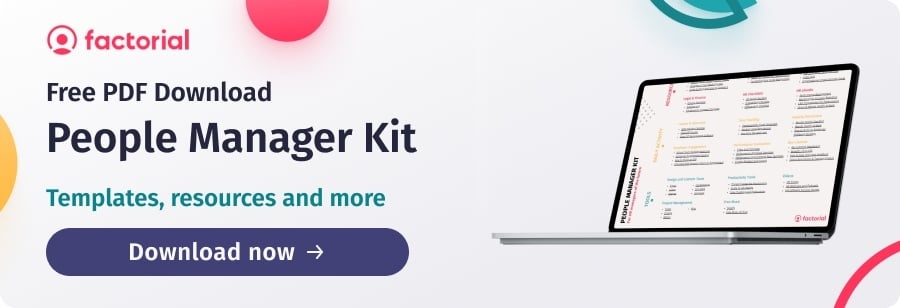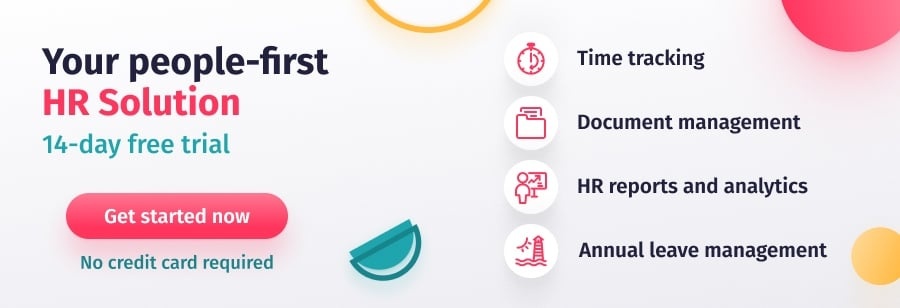Talent can mean different things to different businesses. Some use talent to describe their whole workforce, whereas others use it to define a combination of skills, performance ability, capability, and knowledge, that make up an exceptional employee.
Either way, finding and keeping good talent is essential to an HR strategy – and business success. To acquire and retain successfully, HR teams need to monitor the success of their strategies using KPIs. Doing so will allow people teams to optimise and elevate their approach.
In this article, we’ll outline which are the strongest KPIs for measuring talent management strategies and how to use them.
What are Talent Management Metrics?
Talent management metrics are quantifiable measurements used to assess the effectiveness of a business’s talent management efforts. They allow you to measure the success and impact of your recruitment process and talent management strategy.
Why is it Important to Measure Talent Management Key Performance Indicators?
Key performance indicators (KPIs) allow HR managers to track the health of their workforce and use data analytics to become more efficient. KPIs like employee turnover rates and retention directly impact employee engagement and employee satisfaction, building company culture and forming an integral part of building a company’s successful HR strategy.
Each key performance indicator forms part of a broader picture that will help businesses and HR professionals to:
- Embrace data-driven decision-making.
- Accurately evaluate performance and the employee productivity rate.
- Identify strengths and weaknesses.
- Benchmark and compare both internally and externally.
Key HR Metrics to Measure the Success of Your Talent Management Strategy
1) Internal Promotion Rate
Your talent mobility measures the movement of people in your business, whether laterally, through internal promotion, or transfer, and it’s an increasingly popular way to fill positions. LinkedIn’s data has actually reported a steady increase in internal organisational changes over the last few years. Turning inward to find talent can decrease recruitment costs, reduce turnover, and improve retention. It is also shown to positively impact morale and productivity when employees see potential aspirational career paths in front of them.
To get an idea of your talent mobility, start by finding out what percentage of your positions are filled internally – your internal promotion rate. You can then look deeper into the numbers and compare data across the organisation – what departments are employees moving from, and where are they moving to? You can also look at the type of moves people are making. Are they changing roles because they’ve been promoted or switched departments?
2) Employee Turnover Rate
Tracking your employee turnover rate in its most basic form means following how many people are leaving your business. A high turnover rate means many of your employees are leaving the organisation. Sounds simple enough, but turnover rates can provide insight into various areas in your talent management strategy.
While it’s natural and healthy to have some external mobility, when employee turnover is too high, it can indicate several issues, from poor hiring decisions and bad management to inadequate compensation and poor workplace culture. And don’t forget, replacing employees is costly.
Calculate your turnover rate as a percentage in the first instance, dividing the number of leavers in a certain period by the number of employees and multiplying by 100.
You can then dive deeper by looking at voluntary and involuntary leavers and focusing on the turnover rate for high and low performers. Turnover rates can also support your diversity, equity and inclusion metrics by tracking the progression of minority groups.
3) Retention Rate
Employee retention is your ability to keep the employees you want in your business. Effective employee retention tends to signify a more engaged workforce, often resulting in better productivity.
It’s helpful to calculate the retention rate for the whole business to track it over time, but what you might find more insightful and pragmatic is the understanding it can give you when looking at different managers, locations, and departments within your business. It’s not about singling out those with poor retention rates but using the opportunity to help leaders in your business reach their full potential. Management accounts for 70% of the variance in employee engagement, so having great managers in your business is a no-brainer for getting the best performance out of your teams.
Combined with turnover rates, employee retention can also help you identify potential issues before they become problems – from unconscious bias within the business to a toxic culture in a particular department.
4) Employee Distribution
This multifaceted metric can mean anything from tracking whether the average age demographic of your workforce is increasing or whether there is more management-level staff than people in their early careers.
Distribution is a fundamental metric to track when representing diversity, equity, and inclusion goals and identifying unconscious bias. Diversity has been shown to improve productivity, reinforce positive company culture and reduce staff turnover. By measuring it, you can help create hiring targets to balance out your workforce.
5) High-Potential Talent
A study by Rutgers University found that developing high-potential employees can lower turnover by 7%. Another study found that they can boost their whole team’s performance by 15%. Needless to say, they’re the kind of people you want around.
You can identify high-potential employees using the 9 box grid, also known as the 9-box assessment model. This talent management model is used to analyse and compare employee work performance and potential. The 9-box can also be used to reevaluate talent placement, improve succession planning, and identify performance issues and talent gaps. It facilitates employee growth and contributes to retention, engagement, and productivity. Watch the video below for a step-by-step of how to use it!
Tracking your high-potential employees will give you an idea of your leadership pipeline and the effectiveness of your employee development programmes.
6) Hiring Cost
Hiring cost is one of the oldest HR metrics in the book. It measures how cost-effective your hiring process is and boils down to a simple cost-benefit ratio. It can tell you how efficient your hiring process is and measure the fluctuation in efficiency over time.
Helpfully, there is a standardised definition of cost to hire, which lists all the internal and external costs that need to be included in the metric. This allows you to track the effectiveness of your hiring process over time and benchmark it against other businesses in your industry.
7) Time to Hire
Time to hire is another essential in your talent metric arsenal. It’s a key performance indicator of the health of your hiring process. It is usually measured in days, quantifying the time between the first touchpoint between a candidate and the business to when they accept your job offer.
This metric will help you set expectations for hiring managers and define key performance indicators for recruiters. It will also help address any friction in the process and give you insight into the job market in general.
Time to hire is also an important metric for candidate experience. Firstly, because who wants twelve rounds of interviews?
A long time to hire can also negatively affect businesses because of the time and effort required from the candidate and the potential financial implications a long process can have. And don’t forget the potential for your choice of candidate to be scooped up by a competitor!
8) Employee Net Promoter Score
Employee satisfaction is an umbrella term comprising several factors that represent how your employees feel at work. These include:
- Remuneration
- Stress
- Leadership
- Management
- Teamwork
- Employee experience
- Company culture
- Work-life balance.
The most common way to measure employee satisfaction is through surveys, which can attach numbers to what’s historically been a qualitative metric. Employee satisfaction surveys can now give you an employee Net Promoter Score (eNPS), a standardised way to measure how your employees feel about the organisation. Other things to look at include Glassdoor and the Employee Satisfaction Index (ESI).
Combining these with other talent metrics like your absenteeism rate, insights from your exit interviews, and employee turnover will help give you a more holistic view of your employee satisfaction. Remember that anonymous surveys are more likely to give you an accurate representation of how your employees feel.
9) Performance Metrics
Performance is the golden goose of employee metrics, and there are many ways to measure it. But how do you measure the performance of your talent strategy?
Here are some ideas to get you started:
New-hire failure rate
This measures how many new hires leave the business in a given time frame. It indicates how many employees hired were the right people for the role and, therefore, how successful the hiring process is.
Quality of hire
This is usually quantified using appraisals and retention rates. Again, it reflects the success of the hiring process.
Work Quality
Really this means the performance of your talent management or HR team. Are they meeting their objectives? Are they working efficiently and to a high standard?
10) Training Costs
This relates to how much money human resources and company leaders spend on training. They can be broken down into individuals, teams, departments, or locations and whether you’re training new talent or established team members.
You should be measuring the cost of both internal and external training spend, but remember internal training is less expensive than external, so if you want to look at both together, you might want to think about how you can represent their value relatively, not just the cost.
Training and development help companies gain and retain top talent, with 93% of employees saying they would stay longer if an organisation invested in their careers. It’s a vital, long-term investment.
12) Yield Ratio
Your yield ratio measures the efficiency of your hiring process. It tells you the percentage of candidates who succeed in passing from one recruitment stage to the next. Considering all the stages together will allow you to track the number of candidates needed to hire successfully. Improving your yield ratio enhances your hiring efficiency and reduces your hiring costs.
Whereas a low yield ratio will likely flag issues with your sourcing strategy. If you need 1,000 CVs before you have a big enough pool to move to interview, it can mean you’re not attracting qualified candidates. This could be down to several factors, from a weak job market to a job description that doesn’t reflect the role – and having this information allows you to address it.

13) Time to Full Productivity
This is not an exact science, but the idea is to show how long it takes new hires to start contributing to the business. First, you must decide on a benchmark to measure productivity to keep it consistent across all your new employees. Then you’ll be able to gage some interesting insights across three different areas:
The New Employee
- Experience
- Suitability for the role
- Engagement
HR Department
- Hiring Process
- Onboarding process
Team Manager
- Support of new hires
- Management
- On-the-job training
14) Absenteeism
Absenteeism isn’t taking an odd day off from work because you are sick. It’s the practice of regularly staying away from work without a valid reason. This can be full days or just a few hours with sustained lateness.
A high absenteeism rate is costly for employers and employees. There are financial costs to consider, like high admin costs, the overtime or agency staff you must pay to compensate, the cost of replacing the team member if necessary, and more indirect costs. These include drops in productivity for the whole team, poor employee morale, and disengagement.
Tracking the absenteeism rate can help you to spot potential issues before they develop into problems and intervene if necessary. It can also be a contributing factor when looking at your overall employee satisfaction.
15) Holiday Use
How much holiday your employees use can easily be overlooked when assessing talent management. Still, it’s a straightforward way to garner exciting insights into your teams.
You’re likely already tracking holidays to ensure you know what to pay employees in their final paycheck and to monitor your resources if there are popular holiday periods over summer and at Christmas, for instance.
But your holiday metrics can give you a whole lot more than that. They can indicate if your employees are overloaded and at risk of burnout. This can be compared across departments, teams, and managers to indicate broader issues or discrepancies.
16) Reasons for Leaving
It’s best practice for a formal or informal exit interview to occur when a staff member leaves a business. It promotes goodwill and gives the HR manager an excellent opportunity to discover why the employee is leaving and their experience in the business.
Exit interviews can uncover potential issues within the business and bring to light any information that might help you improve your processes and procedures.
Reasons for leaving can help expose trends like poor work-life balance, toxic company culture, or unmet salary expectations – which you can address once you’re aware.






